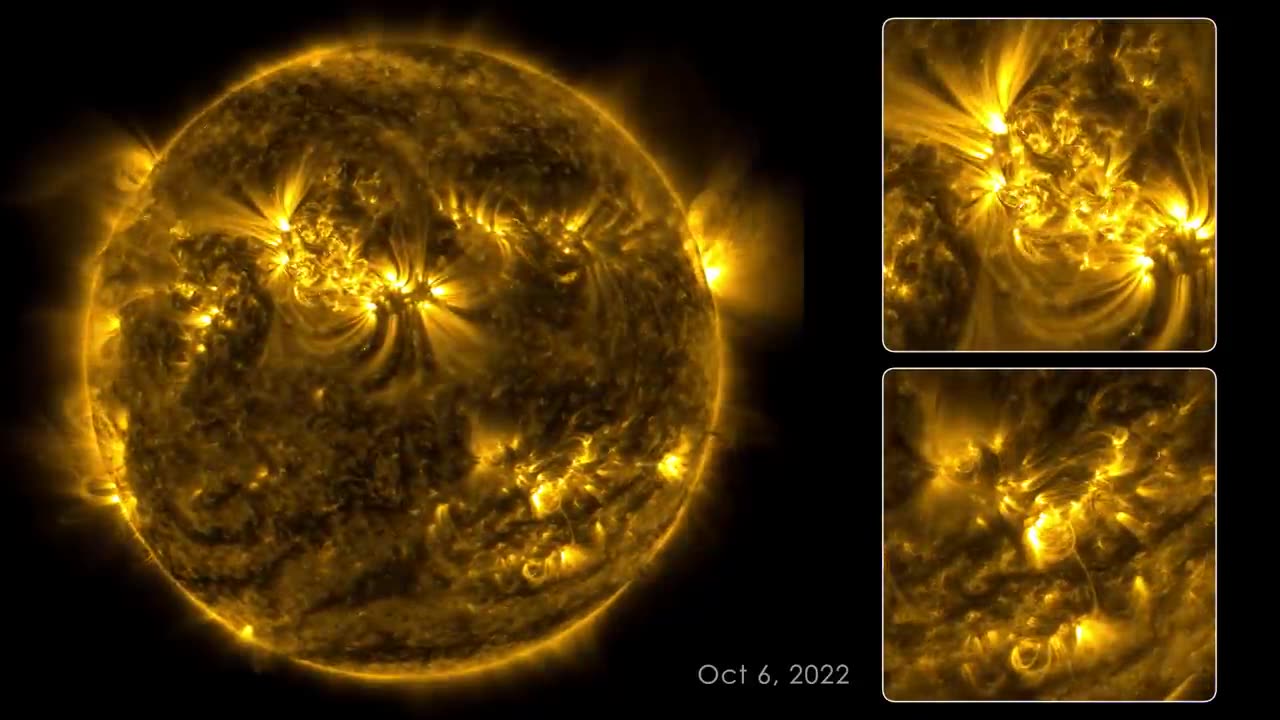Premium Only Content

133 days on the sun
This video chronicles solar activity from Aug. 12 to Dec. 22, 2022, as captured by NASA’s Solar Dynamics Observatory (SDO). From its orbit in space around Earth, SDO has steadily imaged the Sun in 4K x 4K resolution for nearly 13 years. This information has enabled countless new discoveries about the workings of our closest star and how it influences the solar system.
With a triad of instruments, SDO captures an image of the Sun every 0.75 seconds. The Atmospheric Imaging Assembly (AIA) instrument alone captures images every 12 seconds at 10 different wavelengths of light. This 133-day time lapse showcases photos taken at a wavelength of 17.1 nanometers, which is an extreme-ultraviolet wavelength that shows the Sun’s outermost atmospheric layer: the corona. Compiling images taken 108 seconds apart, the movie condenses 133 days, or about four months, of solar observations into 59 minutes. The video shows bright active regions passing across the face of the Sun as it rotates. The Sun rotates approximately once every 27 days. The loops extending above the bright regions are magnetic fields that have trapped hot, glowing plasma. These bright regions are also the source of solar flares, which appear as bright flashes as magnetic fields snap together in a process called magnetic reconnection.
While SDO has kept an unblinking eye pointed toward the Sun, there have been a few moments it missed. Some of the dark frames in the video are caused by Earth or the Moon eclipsing SDO as they pass between the spacecraft and the Sun. Other blackouts are caused by instrumentation being down or data errors. SDO transmits 1.4 terabytes of data to the ground every day. The images where the Sun is off-center were observed when SDO was calibrating its instruments.
SDO and other NASA missions will continue to watch our Sun in the years to come, providing further insights about our place in space and information to keep our astronauts and assets safe.
On the left side of the frame is the full circle of the Sun. It appears in a golden yellow color, but splotchy and with thin yellow wisps extending from the surface. Some areas are very bright and others almost black. The whole Sun rotates steadily, with one full rotation taking 12 minutes in this time lapse. There are usually only a few bright regions visible at a time and they shift and flash like small fires. From these regions there are wispy loops reaching up above the surface that rapidly change shape and size.
On the right side of the frame are two white-outlined squares with enlargements of interesting regions of the Sun.
-
 LIVE
LIVE
The Jimmy Dore Show
1 hour agoLiz Warren CAN’T DEFEND Lying About Biden! Trump Tells Putin to STOP bombing Ukraine! w/Neil Oliver
4,768 watching -
 LIVE
LIVE
Nerdrotic
1 hour agoStar Wars GRAPED? Hollywood In Freefall, Silver Surfer is a MAN! | Friday Night Tights 351
3,431 watching -
 LIVE
LIVE
Dr Disrespect
5 hours ago🔴LIVE - DR DISRESPECT - PUBG - 5 CHICKEN DINNERS CHALLENGE
11,487 watching -
 DVR
DVR
RiftTV/Slightly Offensive
2 hours ago $2.95 earnedTrump SHUTS DOWN War with Iran! Bibi IN RAGE | Guest: Joel Webbon | The Rift Report
11.9K4 -
 LIVE
LIVE
Jamie Kennedy
17 hours agoThe Illusion of Time, Portals, and Paranormal Activity | Ep 203 with Jay Wasley of Ghost Adventures
123 watching -
 14:34
14:34
Bearing
8 hours agoUK Transgender Protesters are NUTS 🦄⚧🏳️⚧️
1.86K24 -
 1:41:53
1:41:53
The Quartering
4 hours agoWoke Judges ARRESTED, Rachel Zegler FAILS, McDonalds & Cancer & More
118K59 -
 2:56:07
2:56:07
The Dana Show with Dana Loesch
4 hours agoSEC DEF HEGSETH'S NEW SIGNAL CHAT CONTROVERSY | The Dana Show LIVE on Rumble!
21.3K1 -
 LIVE
LIVE
LFA TV
19 hours agoALL DAY LIVE STREAM - 4/25/25
3,716 watching -
 1:14:15
1:14:15
The Illusion of Consensus
2 days agoMaxime Bernier on Canada's Mass Immigration Crisis
17K